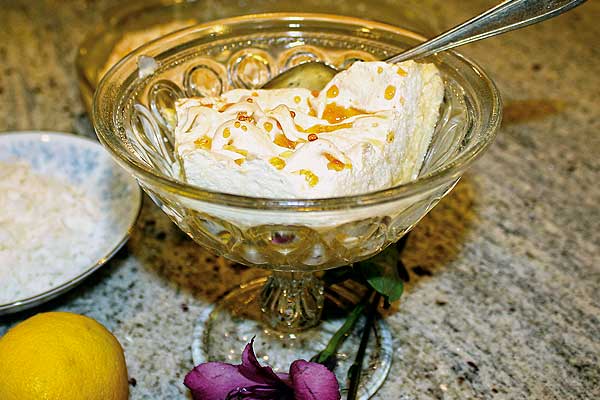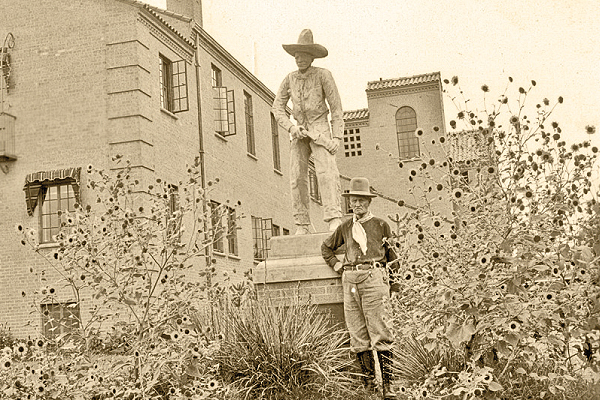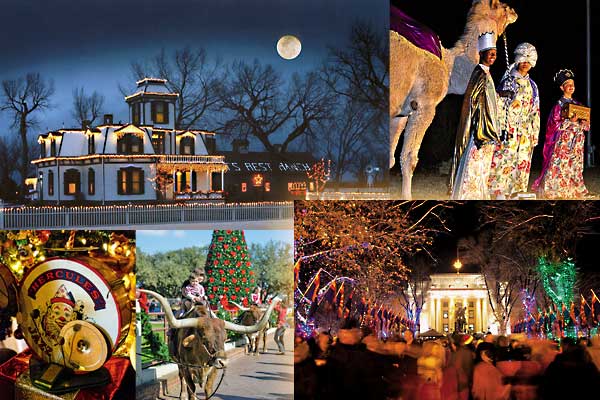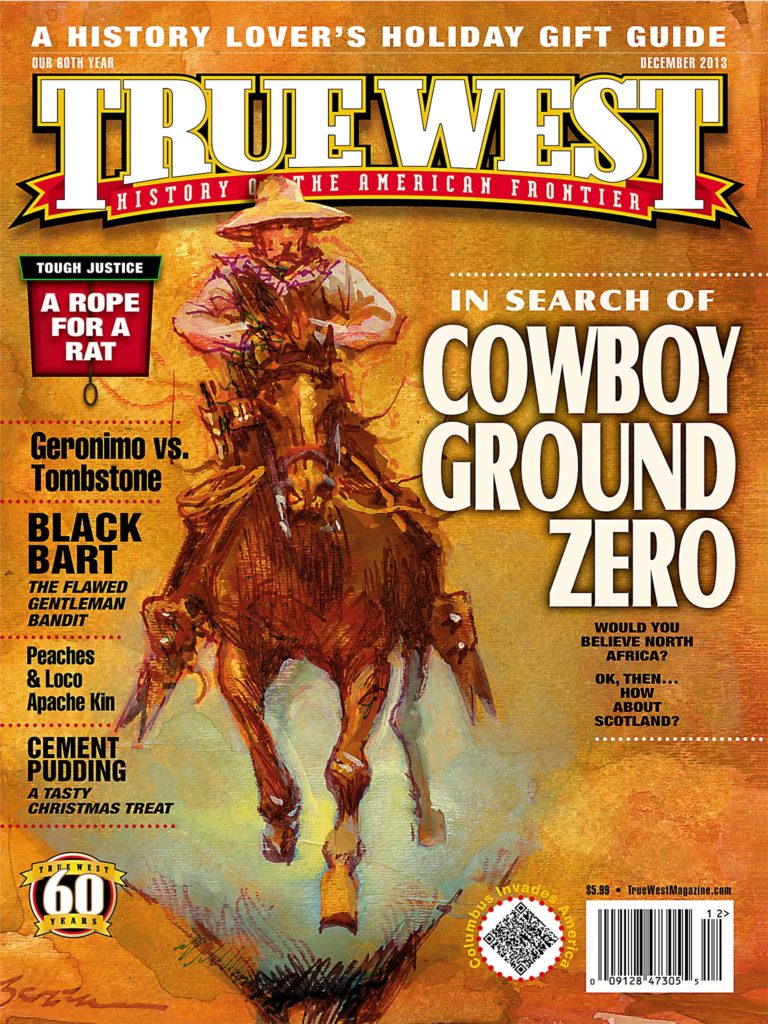 “I remember a strawberry festival that featured a huge floating island pudding,” recalled Mrs. Ford, who lived in Canyon City, Oregon, after the 1862 gold strike, where her father ran The Dalles to Canyon City stage line for Wells Fargo.
“I remember a strawberry festival that featured a huge floating island pudding,” recalled Mrs. Ford, who lived in Canyon City, Oregon, after the 1862 gold strike, where her father ran The Dalles to Canyon City stage line for Wells Fargo.
Today, we think of puddings being served at home or in restaurants, but during the Victorian West, they were also served on the trails—both cattle and emigrant.
J. Henry Brown’s grandparents and parents got “Oregon fever” and headed west in 1847 from the swamps of Illinois. “While the men were making preparations that day,” Brown recalled, “all of the women and children who were able turned out to pick what was called Mountain Huckleberries (whortleberries) which grew in great abundance on bushes about three feet high, gallons were thus secured, flour sacks scraped, as we were about out of that necessary article, and several large puddings were baked in our different Dutch iron ovens.”
Puddings served on the frontier came in all flavors, sizes and shapes. Like pie, pudding was a frugal way of stretching one’s budget and food. Puddings were commonly made out of soda cracker, cornstarch, corn, bread crumbs, suet, flour, graham crackers or rice. The fancier ones were concoctions of plum, orange, cherry, lemon, huckleberry, coconut or floating island, which we now call custard. Pudding pans came in a variety of sizes and shapes, including animal, fruit, vegetable and just plain round.
A typical pudding eaten today is vanilla or chocolate. In the 1800s, the variety was greater, as just about anything soft could be put in a dish. Puddings needed eggs, but any other ingredient was usually fine to add. The eggs were the glue that held the pudding together. Oftentimes, the puddings had a “paste” or pie crust. The old saying, the “proof of the pudding is in the eating” is derived from how well the pudding was set. In the 1800s, this phrase was popularly applied to politicians, to indicate whether they were telling the truth or not. Over the years, it was shortened to the “proof is in the pudding.”
Proof or not, a cook in Portland, Oregon, named Browney took great pride in the plum pudding he served as his last meal to sergeants at a garrison battery: “I had made the pudding two days before,” he remembered, in 1898, “had it boiled, and now, reheated, it made its appearance, amid the welcome shouts of my brother warriors; and I naturally felt a bit proud of it, for I hadn’t been a ship’s cook for nothing.”
“Seems mighty hard,” the sergeant major remarked. “Have you boiled us a cannonball, Browney?”
Sergeant Smith asked him where he had gotten the flour. Browney replied, “From store No. 3, of course.”
The quartermaster sergeant roared, “The deuce you did! Then, hang you, you’ve made the pudding with Portland cement.”
Rather than offer your guests a dish of Portland cement, you should treat them to a pudding with a quirky name. The 1899 World-Herald in Omaha, Nebraska, printed a recipe for “Mountain Dew” pudding. No, it does not contain the citrus-flavored soda; your guests will be pleasantly surprised by the more exotic coconut and lemon tastes, topped with meringue.
*** R E C I P E ***
~Mountain Dew Pudding~
2 c. milk
2 eggs, separated
3 T. coconut
. cracker crumbs
1 tsp. lemon juice
Combine the milk, egg yolks, coconut, crumbs and juice in a bowl and blend well.
Pour into baking dish and bake at 350 for 30-35 minutes.
Whip the egg whites gradually with a cup of sugar until stiff.
Top the firm custard with the egg whites and bake at 300 until golden.
Serve chilled.
***
Recipe adapted from World-Herald
in Omaha, Nebraska, November 26, 1899
Sherry Monahan has penned California Vines, Wines & Pioneers, Taste of Tombstone, The Wicked West and Tombstone’s Treasure. She’s appeared on the History Channel in Lost Worlds and other shows.






